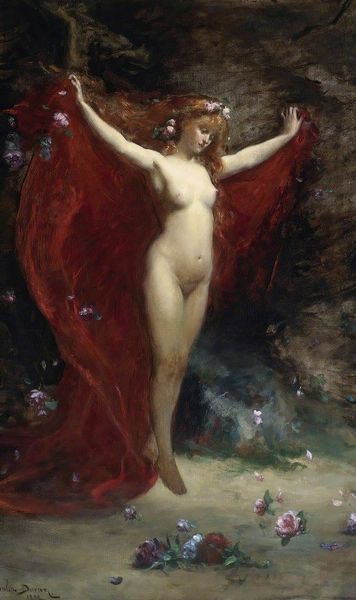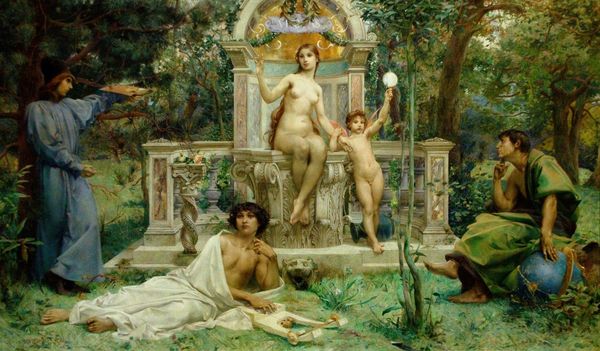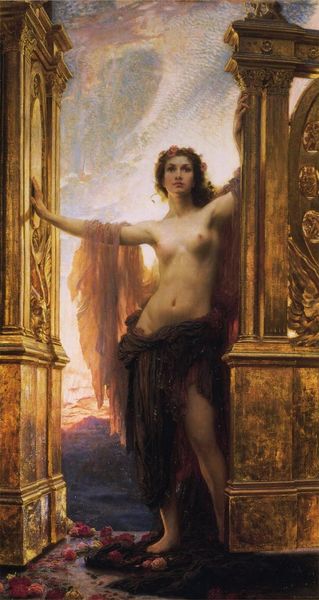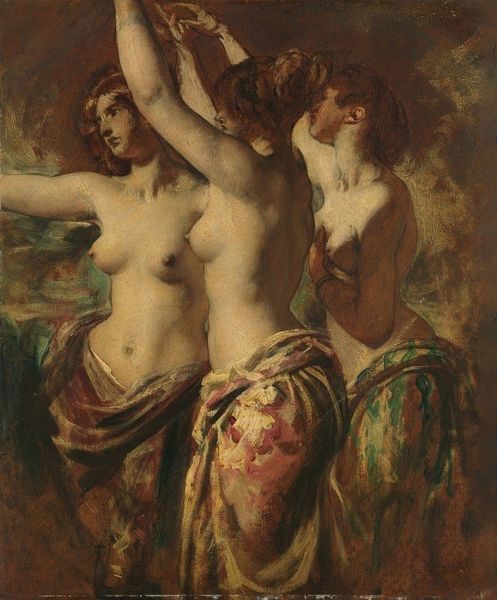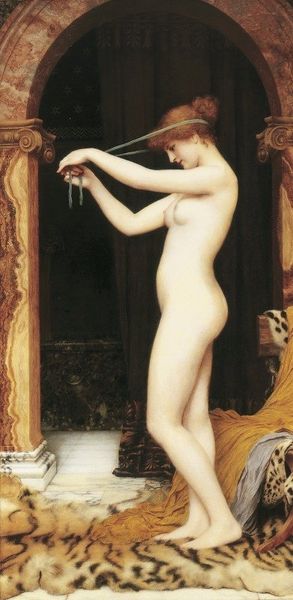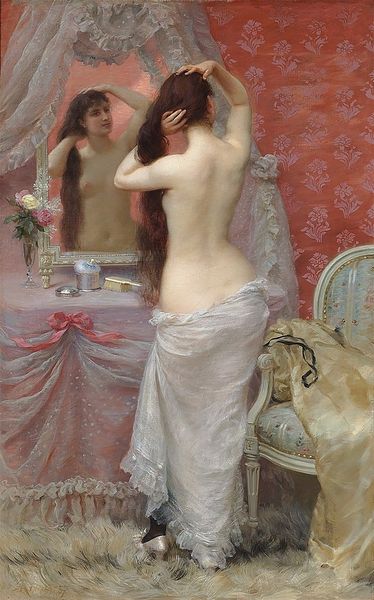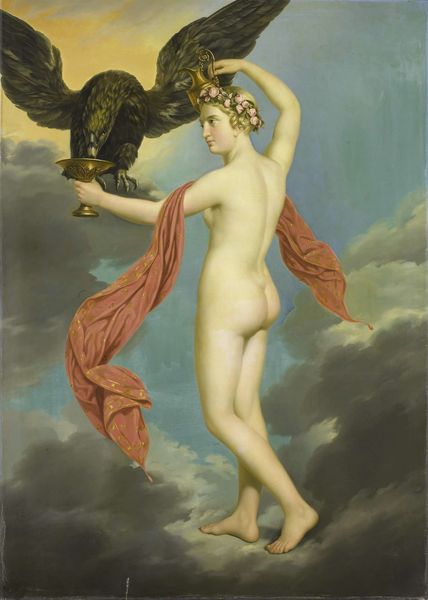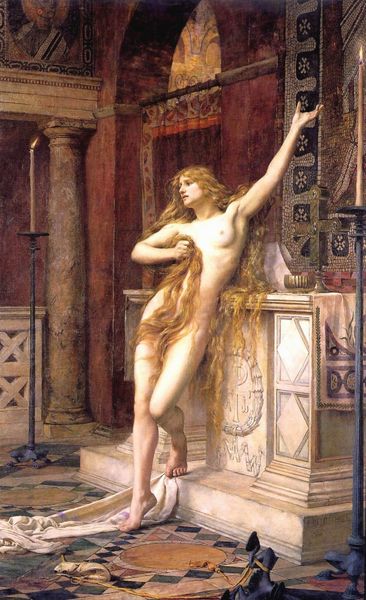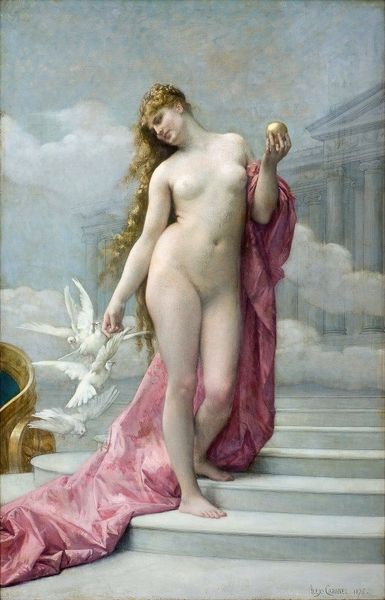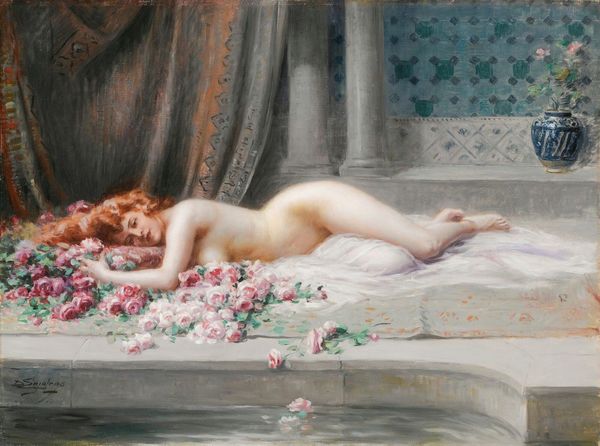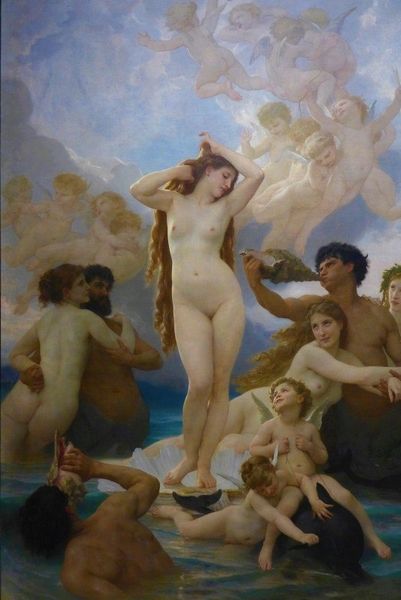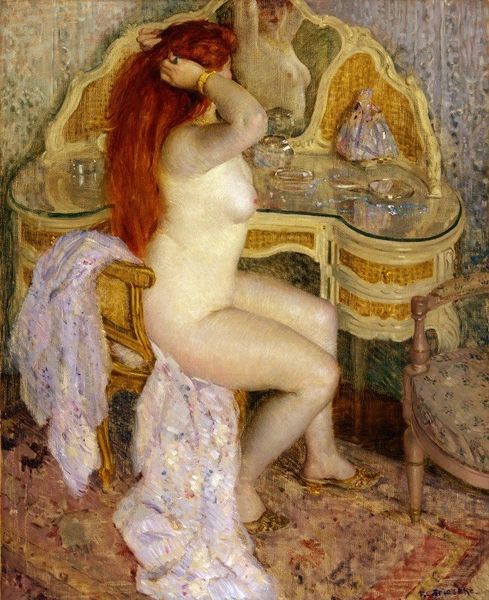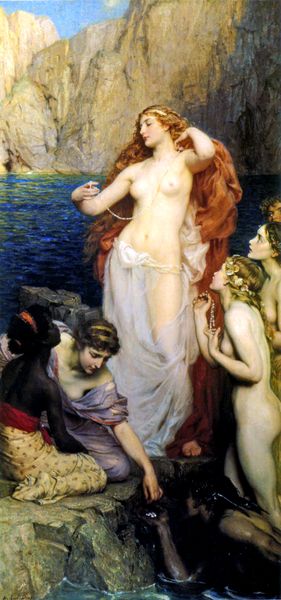
Copyright: Public Domain: Artvee
Curator: This painting absolutely oozes decadence. Editor: Indeed. Let's unpack John Collier's "Tannhäuser en el Venusberg," created around 1901. It's oil on canvas and quite the spectacle. I see an Arthurian knight in full armour on bended knee to Venus, goddess of love. What grabs you most immediately? Curator: The unapologetic eroticism of it. The semi-nude women, Venus front and center with flowers in her hands... it feels charged, provocative. Collier uses the mythology, of course, to make the figures alluring. But how might the artist have conceived of this artwork within the social milieu of the time? Editor: Given the historical context of its creation during the late Victorian period, with its conflicting attitudes towards morality and the body, one wonders if Collier isn't engaging in a critical discourse about how the perception of mythology and beauty, and gender roles, is being mediated in British academic painting. Collier was, after all, exploring subjects considered very sensual through the familiar visual language of Romanticism. He paints flesh tones gorgeously. Curator: There is a real contrast being set up, too, between the idealized beauty of Venus and the grounded physicality of the knight. One wonders about power, desire, and social expectations at the time for representations of relationships, particularly how those representations exclude women from decision-making or authority. His desire for her and how that functions. He has a vulnerability and a strong gaze, she doesn’t give him the same kind of acknowledgement back, her eyes are unfocused. Is this love or control, freedom or captivity? Editor: These figures strike a beautiful pose to reinforce archetypes. It also brings to my attention that Collier occupied roles within institutions like the Royal Society of Portrait Painters. To create art that critiques institutions, but while receiving resources or other compensation from such institutions, reveals tension at the end of the 19th century in Britain regarding art and power. It makes you ponder the different political meanings of a work depending on how or where it is displayed, and how these venues and individuals can both reinforce as well as critique gendered hierarchies of class and sexuality. It seems highly political, especially in our era. Curator: It gives the piece an amazing complexity. Looking closely really reveals how much it’s embedded in societal questions that still reverberate today. Editor: A great discussion. We hope you take some time to examine other meanings in "Tannhäuser en el Venusberg.”
Comments
No comments
Be the first to comment and join the conversation on the ultimate creative platform.
